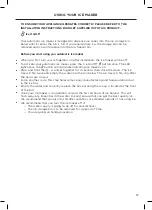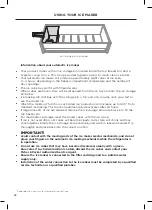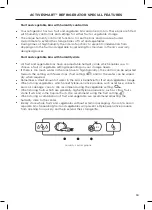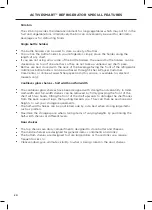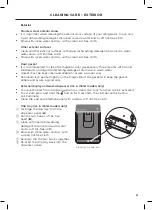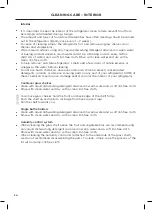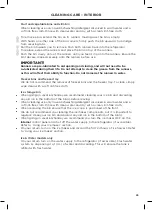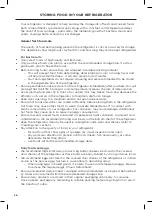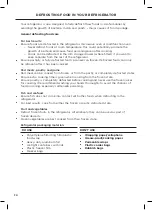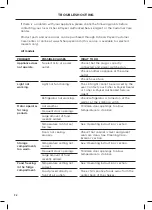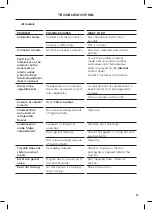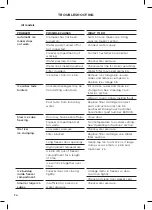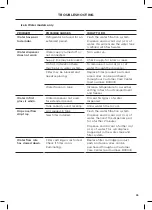
30
DEFROSTING FOOD IN YOUR REFRIGERATOR
Your refrigerator is also designed to help defrost/thaw foods in a safe manner by
avoiding the growth of bacteria, molds and yeasts – major causes of food spoilage.
General defrosting food care
For best results:
●
●
Ensure foods are defrosted in the refrigerator, microwave oven or multifunction oven.
– Never defrost foods at room temperature, this could potentially promote the
growth of bacteria and cause food poisoning even after cooking.
– Foods can be defrosted in the slim storage drawer (where fitted) if you want to
keep separate from the rest of the refrigerator.
●
●
Ensure partially or fully defrosted foods are never re-frozen. Defrosted foods can only
be refrozen after it has been cooked.
Red meats, poultry and game
●
●
Red meat can be cooked from frozen, or from the partly or completely defrosted states.
Ensure extra cooking time is given when cooking from the frozen state.
●
●
Ensure poultry is completely defrosted before cooking and never use the frozen juices
for cooking. We recommend washing your hands thoroughly to avoid the chances of
food poisoning, especially salmonella poisoning.
Fish and seafood
●
●
Ensure fish does not come into contact with other foods when defrosting in the
refrigerator.
●
●
For best results, cook from either the frozen or partly defrosted state.
Fruit and vegetables
●
●
Defrost frozen fruits in the refrigerator. Alternatively they can be used as part of
frozen desserts.
●
●
Frozen vegetables are best cooked from their frozen state.
Refrigerator packaging materials
DO USE
DON’T USE
●
●
Polyethylene film/cling film/plastic
food wrap
●
●
Heavy-duty aluminum foil
●
●
Air-tight containers with lids
●
●
Plastic freezer film
●
●
Freezer bags
●
●
Wrapping paper/cellophane
●
●
Grease-proof/cooking paper
●
●
Permeable wraps
●
●
Plastic carrier bags
●
●
Rubbish bags


